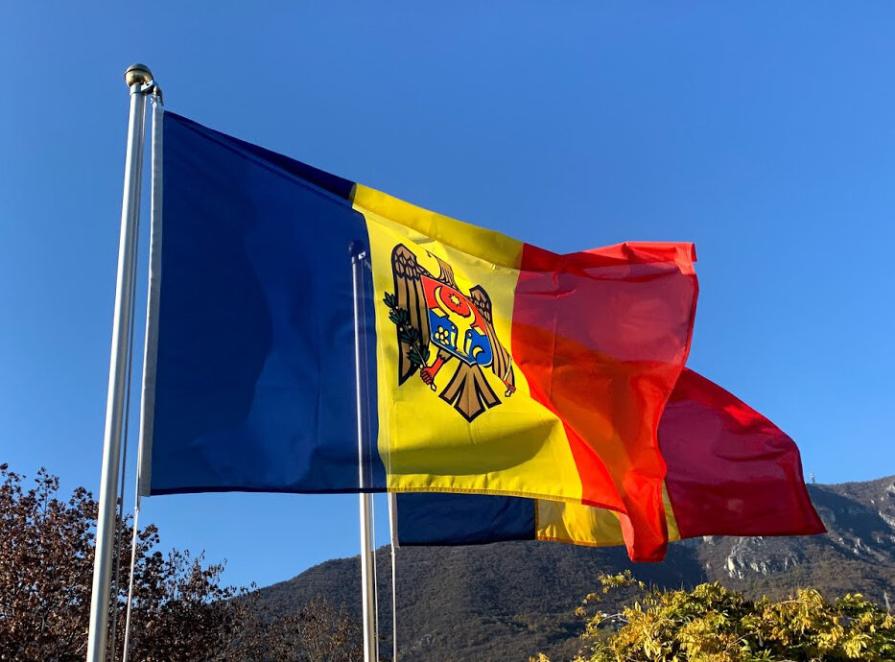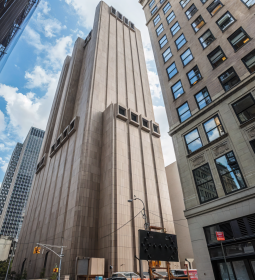According to some studies, the colors of the flag were used in this country during the time of the ruler of medieval Moldavia Stephen the Great, who ruled the principality at the turn of the XV and XVI centuries. However, the first reliable mentions are associated with Mykhailo the Brave, who in the period from 1594 to 1601 for a short moment united all the Danube princely territories into one state.

Unfortunately, this formation was short-lived and soon fell under the blows of the Poles, Czechs and Moravians, as well as the Turks from the south. After that, the national colors were forgotten until 1834, when Alexander Giko, Prince of Wallachia, chose yellow as his flag, with an eagle of blue color, crowned with three stars of milky color.
Thanks to the help of the Russian Empire, the principalities received autonomy and claimed independence several times. During this period, Wallachia had its own fleet, its ships ploughed the Danube under a rectangular cloth with three stripes of red-yellow-blue color, arranged horizontally. In the center, an eagle armed with a cross with a star on his chest was laid on them, and the corners were marked with a princely monogram. The original flag is kept as an artifact in the Museum of the Armed Forces of the Republic of Romania.
Moldova had its own similar symbol – it looked like a blue square with a red bull's head in the crown in the center. At the corners were placed red squares with an eight-pointed star. The flag was one-sided, and on the back was embroidered St. George, trampling on a snake.
In 1821, during the uprising of Teodor Vladimirescu in Wallachia, which briefly became the ruler, the blue-yellow-red tricolor flag became the symbol of the national liberation movement.

Official approval by the state body first took place in 1848, during the revolution. Both horizontal and vertical versions were used, and in the center in the plate was the inscription "Justice and Brotherhood". The use of three colors was explained by the need to combine on the flag the traditional colors of Wallachia (blue), Moldavia (scarlet) and Semigradia (gold).
Unfortunately for Romanians, the revolution was suppressed. The united Wallachian-Moldavian state appeared only in 1859-1860, and its symbol was a horizontal tricolor with yellow in the middle and blue in the lower part.
In 1866, the Prussian prince Karl Hohenzollern was elected monarch of the state, he turned the colors vertically and added the coat of arms of the ruling house to the yellow middle part. This option became official for a very long time and was used in various versions until the abolition of the monarchy in 1947.
On December 30, 1947, after the abdication of the last king, the monarchy in Romania ceased to exist, the people were proclaimed the source of power, and the socialist republic of the working people was proclaimed the form of government. In 1948, from January to mid-April, there was a coat of arms depicting a tractor leaving the solar disk in a wreath of ears of wheat and corn, crowned with the abbreviation RPR - Romanian Socialist Republic.
However, very soon the coat of arms underwent changes: forests and mountains settled on it, the sun remained, and an oil pump was added on the left side. Instead of holders of the coat of arms, sheaves of wheat were used, twisted with ribbons of national colors. In this form, all this existed until 1952, when a five-pointed scarlet star appeared on the coat of arms in the upper part.
With cosmetic changes, everything remained so until 1989, when the rebellious people overthrew the dictator Ceausescu. The symbol of the rebels was the flag with the carved coat of arms - it (without a hole) in December 1989 became the official state symbol of democratic Romania and is still preserved.

Symbols and signs
Of course, throughout history, state flowers had special symbols. Under kings and princes, colors were deciphered as follows:
- blue signified the happiness and protection of heaven
- yellow – wealth
- red – the dedication of the masses in the struggle for freedom.
Communists, or rather socialists, made adjustments
- blue still represented the sky, but without clerical overtones
- yellow – wheat and corn fields
- red is a brotherhood on blood.

During the reign of the royal board were interpreted as follows:
- blue meant happy, blessed heaven
- yellow – wealth
- red – the bravery and dedication of the people.
In Europe, the Romanian flag can be confused with the colors of Andorra, and outside the continent - also with Chad (a former French colony in West Africa). Moldova stands out, where there is a nationalist pro-Russian movement that has the support of the intelligentsia and aims at the reunification of states. This, however, is resisted by Russian-speaking and Ukrainian-speaking Moldovans, as well as Moldovan communists and socialists, who do not agree with the statement that they represent the same people with the Romanians.










